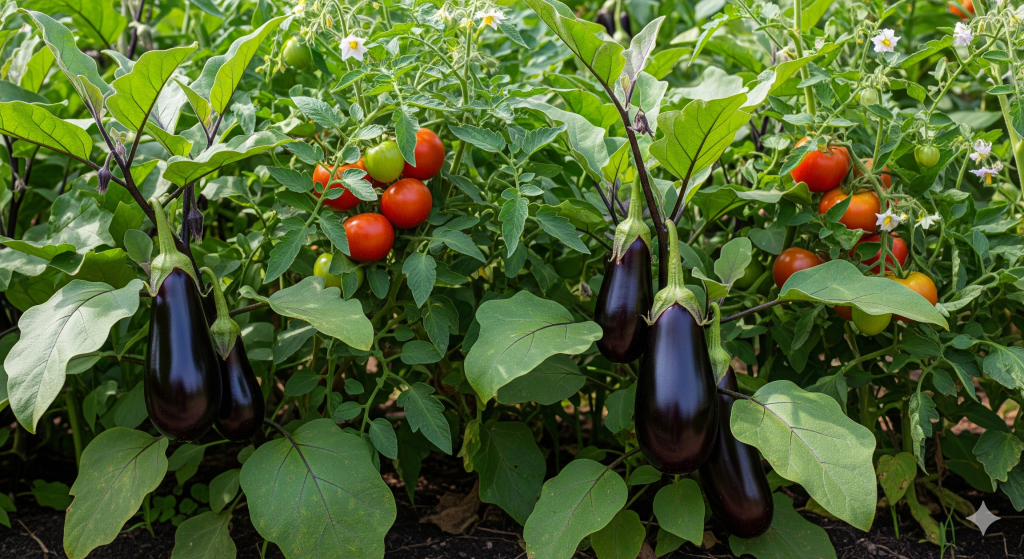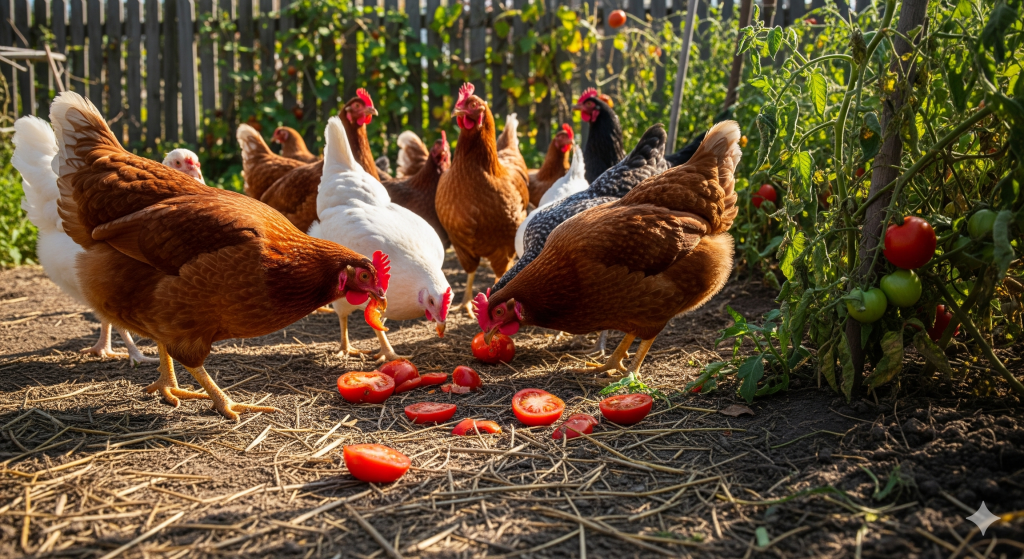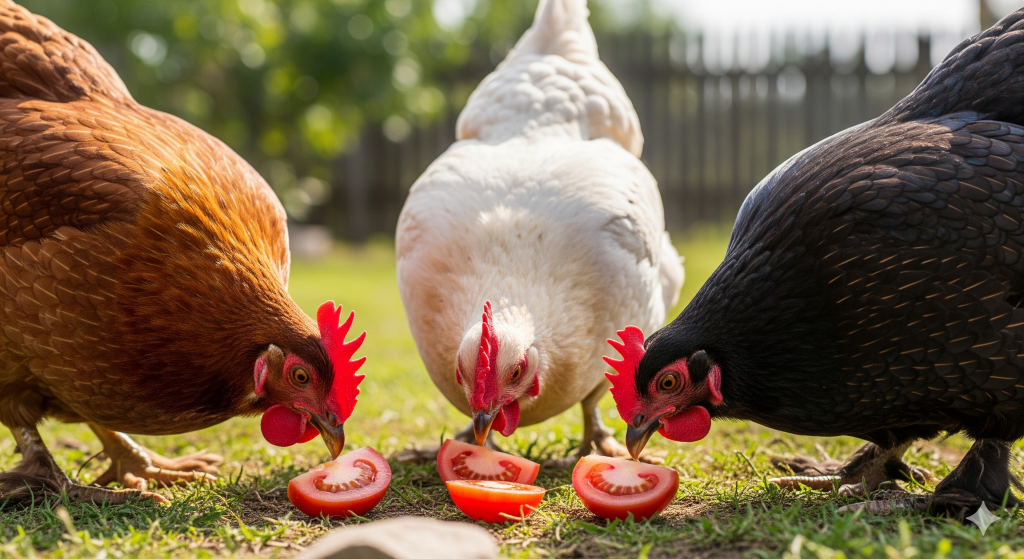Table of Contents
For gardeners looking to maximize space and create a thriving, synergistic vegetable patch, companion planting is a crucial strategy. When considering two of the most popular summer crops, eggplants and tomatoes, their compatibility is a frequent and important question. So, can eggplants grow next to tomatoes? The answer is a definitive yes, they can, but with significant caveats.
This pairing is a classic example of a double-edged sword in the garden. Because both eggplants and tomatoes belong to the same botanical family—the nightshades (Solanaceae)—they share a remarkable number of characteristics. This means they have similar needs for sunlight, water, and soil nutrients, which can simplify their care when planted together. However, this close genetic relationship is also their greatest vulnerability. It means they are susceptible to the exact same pests and soil-borne diseases.
Planting a large block of tomatoes and eggplants side-by-side can inadvertently create a monoculture, effectively rolling out a welcome mat for pests and pathogens. An issue that starts on one plant can rapidly spread through the entire patch, potentially leading to a devastating loss of both crops. Therefore, while you can certainly plant them together, doing so successfully requires a proactive approach to soil health, pest management, and disease prevention. This guide will explore the intricate relationship between these two nightshade cousins, detailing the risks, the benefits, and the best practices for creating a healthy and productive garden.
Ready to Take Your Self-Sufficiency to the Next Level?

If you love the self-sufficient lifestyle, this is the only guide you’ll ever need. Learn how to generate your own power, secure your water supply, and become truly independent. No fluff, just actionable plans.
➡️ Check out The Self-Sufficient Backyard and start your journey today!
Bad Companion Plants for Eggplant
Understanding which plants to avoid is just as important as knowing which ones are beneficial. Bad companions can inhibit growth, attract pests, or compete too aggressively for resources. For eggplants, the primary culprits to keep at a distance are few but significant.
- Fennel: This is perhaps the most well-known antagonistic plant in the garden. Fennel releases a chemical compound from its roots (a phenomenon known as allelopathy) that can inhibit the growth of many other plants, including members of the nightshade family like eggplant. Its presence can lead to stunted plants and a reduced harvest. It’s always best to give fennel its own isolated spot in the garden, far away from your main vegetable beds.
- Corn: While not directly harmful, corn is a major attractant for the corn earworm, a pest that is also known to attack eggplant fruits, boring into them and causing rot. Planting these two near each other can increase the pest pressure on your eggplants. Corn also grows very tall and can cast too much shade on sun-loving eggplants if not positioned correctly.
- Geraniums: Though beautiful, geraniums are known to be susceptible to certain pests, like budworms, which can also target eggplants and tomatoes. Planting them nearby may increase the local pest population.
- Aggressive Spreaders: Plants that spread aggressively, like many varieties of mint, should be kept in containers. If planted in the same bed, their runners can quickly overrun the space, competing with the eggplant’s root system for water and nutrients.
Eggplant Companion Plants
Surrounding your eggplants with beneficial companions is one of the best ways to ensure their health and productivity. These allies can help deter pests, improve soil health, and attract beneficial insects to your garden.
- Bush Beans: An excellent companion, bush beans fix atmospheric nitrogen into the soil, providing a crucial nutrient boost for heavy-feeding eggplants. They also help deter the Colorado potato beetle, a pest that can sometimes plague eggplants.
- Marigolds: A true workhorse in the garden, the French marigold is renowned for releasing a substance from its roots that deters root-knot nematodes, microscopic soil worms that can damage the root systems of nightshades. Their scent also helps repel other pests above ground.
- Nasturtiums: These beautiful, edible flowers act as a fantastic “trap crop” for aphids and flea beetles. Pests are drawn to the nasturtiums, luring them away from your more valuable eggplant crop. They also provide a living mulch, helping to suppress weeds and retain soil moisture.
- Spinach: Planting a low-growing crop like spinach around the base of your taller eggplant can act as a living mulch, shading the soil to keep it cool and moist. The spinach can be harvested before the eggplant reaches its mature size and requires the full space.
- Aromatic Herbs: Several herbs can be beneficial. Catnip and oregano are known to help repel flea beetles, one of the most common eggplant pests. Thyme and rosemary (in a nearby pot) can also help deter various garden pests with their strong scents.
- Borage: The vibrant blue flowers of borage are exceptional at attracting pollinators like bees, which can help improve the fruit set of your eggplant blossoms. It also attracts beneficial predatory insects like lacewings and predatory wasps.
Can Eggplant Be Grown in Pots?
Yes, absolutely! Growing eggplant in pots is an excellent option, especially for those with limited garden space, poor native soil, or for gardeners who want to control their plant’s environment more closely. Container gardening allows you to provide the exact soil mix your eggplant needs and makes it easier to manage watering and pests.
Success with potted eggplants hinges on a few key factors:
- Pot Size is Crucial: Eggplants have extensive root systems and are heavy feeders. A small pot will lead to a stunted, unproductive plant. Choose a large container with a minimum size of 5 gallons (approximately 19 liters), though a 7- to 10-gallon pot is even better. Ensure the pot has ample drainage holes at the bottom to prevent waterlogging and root rot.
- Select the Right Variety: While any eggplant can be grown in a pot, smaller, more compact varieties are often easier to manage. Look for varieties described as “patio,” “dwarf,” or “container-friendly,” such as ‘Fairy Tale’, ‘Hansel’, ‘Gretel’, or ‘Patio Baby’.
- Use High-Quality Potting Mix: Do not use garden soil in your pots, as it is too heavy and compacts easily, strangling the roots. Use a high-quality, well-draining potting mix that is rich in organic matter. You can amend this with compost or a slow-release granular fertilizer to provide sustained nutrition.
- Consistent Watering: Pots dry out much faster than garden beds, especially on hot, windy days. Check the soil moisture daily by sticking your finger an inch or two deep. Water thoroughly whenever the soil feels dry. Consistent moisture is key to preventing blossom drop and producing well-formed fruit.
- Full Sun: Just like in a garden, potted eggplants need a location that receives at least 6-8 hours of direct sunlight per day.
- Regular Feeding: The frequent watering required for pots leaches nutrients out of the soil more quickly. Plan to feed your potted eggplants with a balanced liquid fertilizer every 2-3 weeks throughout the growing season to keep them productive.
Conclusion
So, while the answer to “Can eggplants grow next to tomatoes?” is a straightforward yes, the practice requires a mindful and proactive approach. Their shared heritage in the nightshade family makes them compatible in terms of care but vulnerable to the same adversaries. The most successful gardeners who pair these crops do so with a clear strategy: ensuring ample spacing for air circulation, monitoring vigilantly for the first signs of pests or disease, and practicing diligent crop rotation from year to year to prevent the buildup of soil-borne pathogens.
For a lower-risk approach, surround your eggplants and tomatoes with beneficial companions like bush beans, marigolds, and aromatic herbs. This creates a more diverse and resilient ecosystem that is naturally better at keeping problems in check. Whether you choose to plant them side-by-side or in separate beds, understanding their fundamental needs and potential weaknesses is the key to a bountiful harvest of both of these quintessential summer crops.



